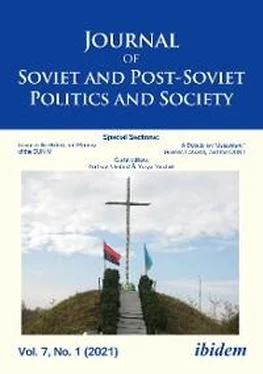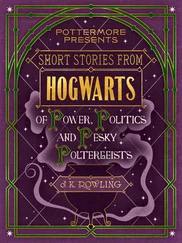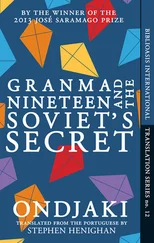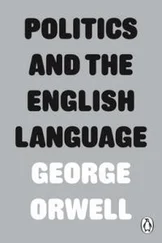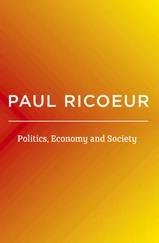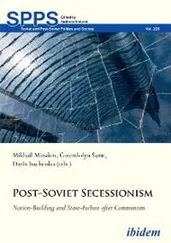18In chronological order, since 2017: John-Paul Himka, “Former Ukrainian Policemen in the Ukrainian National Insurgency: Continuing the Holocaust outside German Service,” in Lessons and Legacies XII: New Directions in Holocaust Research and Education, eds. Wendy Lower and Lauren Faulkner Rossi (Northwestern University Press, 2017), 141–63; Jeffrey S. Kopstein and Jason Wittenberg, Intimate Violence: Anti-Jewish Pogroms on the Eve of the Holocaust (Cornell University Press, 2018); Andriy Usach, “The ‘Eastern Action’ of the OUN(b) and the Anti-Jewish Violence in the Summer of 1941: The Cases of Smotrych and Kupyn,” Euxeinos: Governance and Culture in the Black Sea Region 9, no. 27 (2019): 63–84; Ivan Katchanovski, “The OUN, the UPA, and the Nazi Genocide in Ukraine,” in Mittäterschaft in Osteuropa im Zweiten Weltkrieg und im Holocaust / Collaboration in Eastern Europe during World War II and the Holocaust, eds. Peter Black, Béla Rásky and Marianne Windsperger (New Academic Press, 2019), 67–93; Grzegorz Rossoliński-Liebe, “Survivor Testimonies and the Coming to Terms with the Holocaust in Volhynia and Eastern Galicia: The Case of the Ukrainian Nationalists,” East European Politics and Societies and Cultures 34, no. 1 (2020): 221–40; Struve, “The OUN(b), the Germans, and Anti-Jewish Violence in Eastern Galicia during Summer 1941;” Radchenko, “The Biography of the OUN(m) Activist Oleksa Babii in the Light of His ‘Memoirs on Escaping Execution’ (1942);” and John-Paul Himka, Ukrainian Nationalists and the Holocaust: OUN and UPA’s Participation in the Destruction of Ukrainian Jewry, 1941-1944 ( ibidem -Verlag, 2021).
19Per Anders Rudling, “The Cult of Roman Shukhevych in Ukraine: Myth Making with Complications,” Fascism: Journal of Comparative Fascist Studies 5, no. 1 (2016): 26–65.
20Peter W. Rodgers, “Contestation and Negotiation: Regionalism and the Politics of School Textbooks in Ukraine’s Eastern Borderland,” Nations and Nationalism 12, no. 4 (2006): 681–97; idem , “‘Compliance or Contradiction’? Teaching ‘History’ in the ‘New’ Ukraine: A View from Ukraine’s Eastern Borderlands,” Europe-Asia Studies 59, no. 3 (2007): 503–19; and David Marples, Heroes and Villains: Creating National History in Contemporary Ukraine (Central European University Press, 2007).
21On this issue, see: Barbara Törnquist-Plewa and Yuliya Yurchuk, “Memory Politics in Contemporary Ukraine: Reflections from the Post-Colonial Perspective,” Memory Studies 12, no. 6 (2019): 699–720; Yuliya Yurchuk, “Global Symbols Local Meanings: The ‘Day of Victory’ after Euromaidan,” in Transnational Ukraine? Networks and Ties that Influence(d) Contemporary Ukraine, eds. Timm Beichelt and Susann Worschech ( ibidem -Verlag, 2017): 66–89.
22On the role of anniversaries in public space and collective memory, see John Gillis, Commemorations: The Politics of National Identity (Princeton University Press, 1994).
23See the latest (as of early 2021) discussion of this issue: Andrei Portnov, “Bandera: Priglasheniie k spokoinomu razgovoru,” Colta.ru , 11 January 2021, https://www.colta.ru/articles/specials/26340-andrey-portnov-bandera-istoriya-i-mif (accessed on 19 January 2021).
24On the securitization of history in the post-Maidan Ukraine see Yuliya Yurchuk, “Historians as Activists: History-Writing in Times of War. The Case of Ukraine in 2014–2018,” Nationalities Papers (2020): 1–19. On other cases of the securitization of memory and history in Eastern Europe, see Maria Mälksoo, The Politics of Becoming European: A Study of Polish and Baltic Post-Cold War Security Imaginaries (Routledge, 2010); Vlad Strukov and Victor Apryshchenko (eds.), Memory and Securitization in Contemporary Europe (Palgrave Macmillan, 2018). A trend towards securitization is also observable in Ukrainian religious affairs: Denys Shestopalets, “Church as an Existential Threat: The Securitization of Religion in Post-Euromaidan Ukraine,” Journal of Church and State 62, no. 4 (2020): 713–39.
NKVD Internal Troops Operations against the Ukrainian Insurgent Army in 1944–45 1
Grzegorz Motyka
Abstract: The Internal Troops of the Soviet People’s Commissariat for Internal Affairs (the NKVD) were a special-purpose unit established to fight guerrilla movements and “internal enemies.” Documents declassified following the collapse of the USSR indicate that “pacifications” carried out by the NKVD Internal Troops were brutal and very extensive. Analysis of activities targeting the Ukrainian underground movement in Volhynia and Eastern Galicia in the final period of World War II and immediately after its end suggests that once the front had moved through these regions large-scale dragnet operations to eliminate major Ukrainian Insurgent Army (UPA) units were immediately launched. In time, these operations covered the entire region. What followed were operations carried out by smaller pursuit groups which constantly operated in the field. The NKVD repression targeted not only members of the underground movement but also large groups of civilians. In principle, collective family responsibility was observed; there were numerous instances when defenseless individuals were killed—in reports they were described as armed “criminals.” The Organization of Ukrainian Nationalists (OUN) and the UPA enjoyed genuine support on the part of the local Ukrainian population, which is why, despite huge losses, they continued their underground fighting activity until the mid-1950s. However, as early as the turn of 1945 and 1946, due to the activity of the NKVD, large guerrilla fighter units were demobilized and adopted the tactics known as “deep underground.” In this period, nearly four hundred thousand residents of this region, i.e., almost every family, were affected by Soviet repression. The memory of these acts of repression has contributed to the emergence of the cult of the UPA in present-day Ukraine.
Key words:NKVD Internal Troops, OUN and UPA, Stalinist-era repression, dragnet operations targeting guerrilla fighter movements, Volhynia and Eastern Galicia, deportation.
The Internal Troops of the NKVD (the People’s Commissariat for Internal Affairs) were an important element of the Soviet repressive apparatus. This unit was formed back in 1918 (as the Military Corps of the VChK (the All-Russian Extraordinary Commission)) and from its early days was viewed as the armed wing of the communist party, intended to perform special tasks. The assumption was that it should be composed of soldiers who were particularly enthusiastic about communist ideals and ready to carry out repressions against anyone considered an enemy of the revolution.
The NKVD troops began to play a special part following Germany’s attack on the USSR. Pursuant to a Sovnarkom decision of 25 June 1941, these troops were responsible for ensuring security to the rear of the Red Army. To this end, the NKVD troops were expected to fight the enemy’s sabotage and disruption groups and criminal groups, track down spies, protect transportation routes, organize patrolling activities, and finally, prevent marauding and desertion. However, when the Red Army launched a counteroffensive, the NKVD troops were tasked with fighting the national guerrilla movements and carrying out acts of repression, i.e., arrests and deportations, targeting any “reactionary elements” in the areas under communist rule. 2Archival materials declassified following the collapse of the USSR indicate that the pacification of the Ukrainian nationalist movement in Volhynia and Eastern Galicia was particularly bloody. It affected as many as several hundred thousand individuals, including those killed, arrested, and deported. Despite its magnitude, until the end of the twentieth century this operation remained practically unknown to a wider public.
Читать дальше
